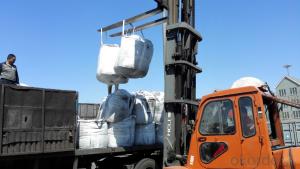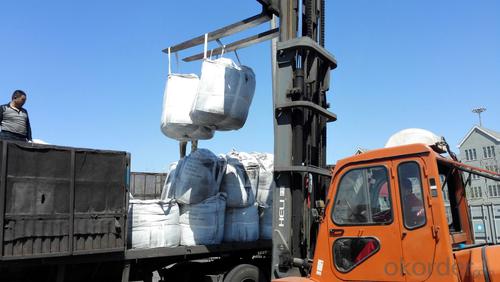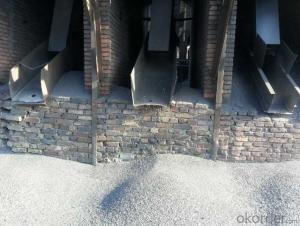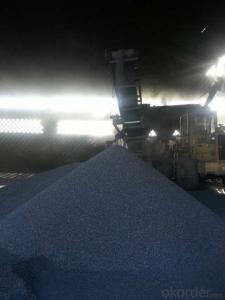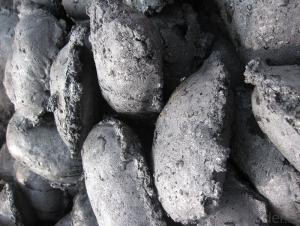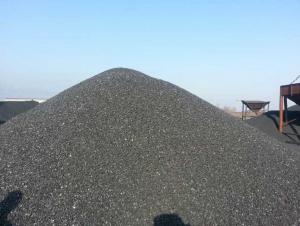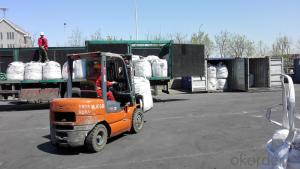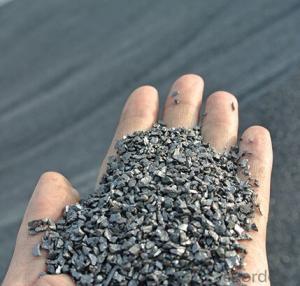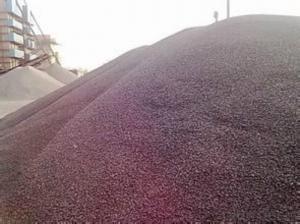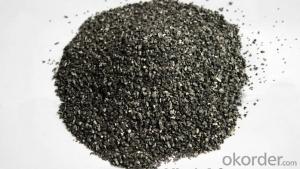FC88% Recarburizer with Ash 4% for steel making
- Loading Port:
- Tianjin
- Payment Terms:
- TT OR LC
- Min Order Qty:
- 20.1
- Supply Capability:
- 1001 m.t./month
OKorder Service Pledge
OKorder Financial Service
You Might Also Like
Introduction:
Calcined anthracite can be called carbon additive, carbon raiser, recarburizer, injection coke, charging coke, gas calcined anthracite.It is playing more and more important role in the industry
Best quality Anthracite as raw materials through high temperature calcined at over 2000℃ by the DC electric calciner with results in eliminating the moisture and volatile matter from Anthracite efficiently, improving the density and the electric conductivity and strengthening the mechanical strength and anti-oxidation. It has good characteristics with low ash, low resistivity, low sulphur, high carbon and high density. It is the best material for high quality carbon products. It is used as carbon additive in steel industry or fuel.
Features:
G-High Calcined Anthracite is produced when Anthracite is calcined under the temperature of 1240°C in vertical shaft furnaces. G-High Calcined Anthracite is mainly used in electric steel ovens, water filtering, rust removal in shipbuilding and production of carbon material.
Specifications:
F.C.% | 95MIN | 94MIN | 93MIN | 92MIN | 90MIN | 85MIN | 84MIN |
ASH % | 4MAX | 5MAX | 6 MAX | 6.5MAX | 8.5MAX | 12MAX | 13MAX |
V.M.% | 1 MAX | 1MAX | 1.0MAX | 1.5MAX | 1.5MAX | 3 MAX | 3 MAX |
SULFUR % | 0.3MAX | 0.3MAX | 0.3MAX | 0.35MAX | 0.35MAX | 0.5MAX | 0.5MAX |
MOISTURE % | 0.5MAX | 0.5MAX | 0.5MAX | 0.5MAX | 0.5MAX | 1MAX | 1MAX |
Pictures
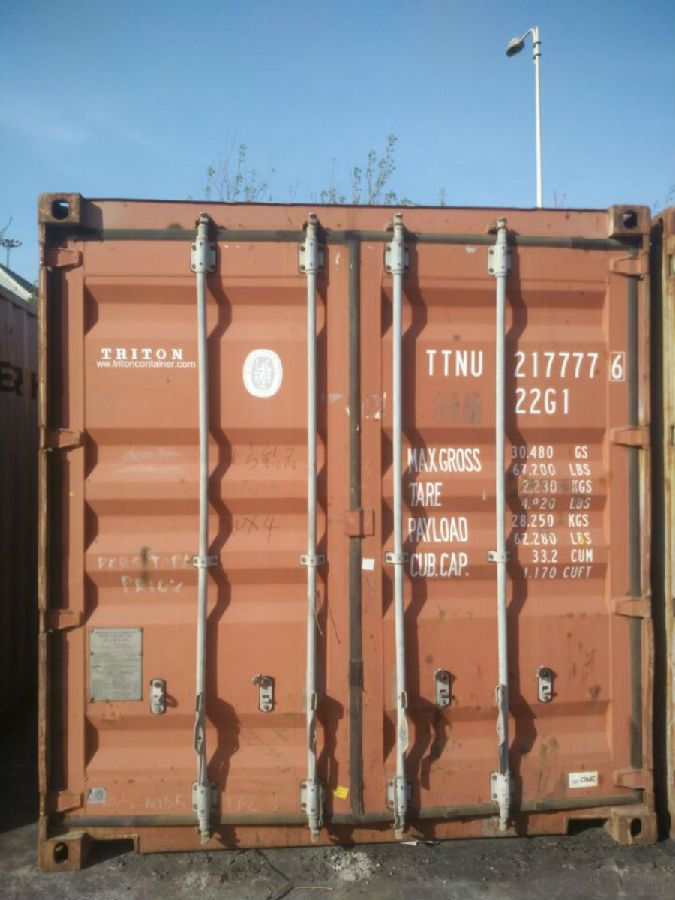
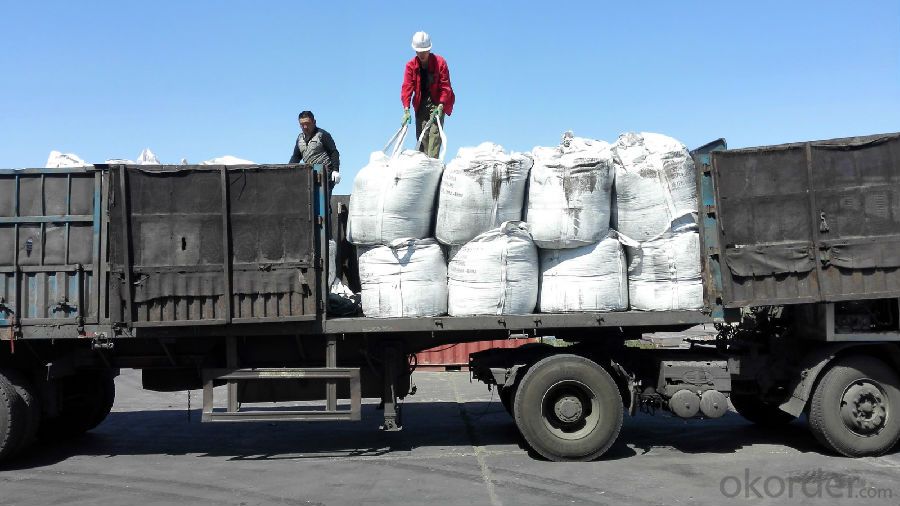
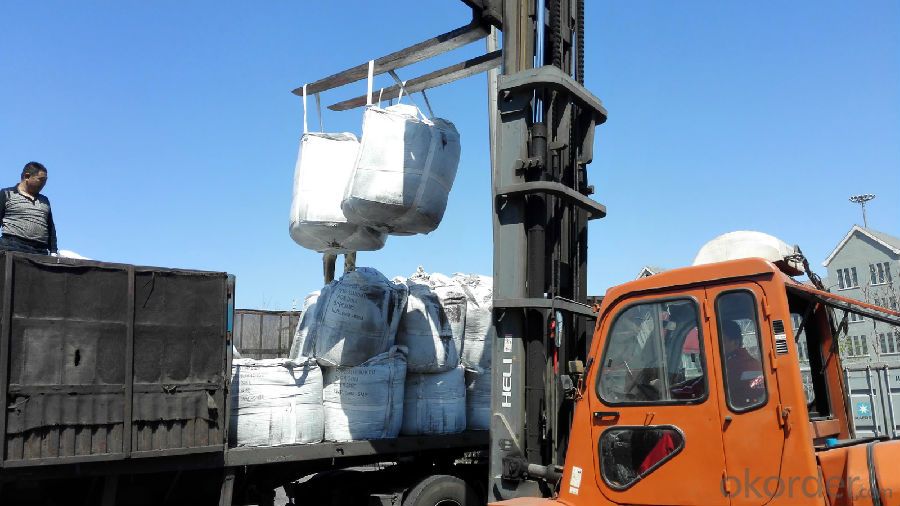
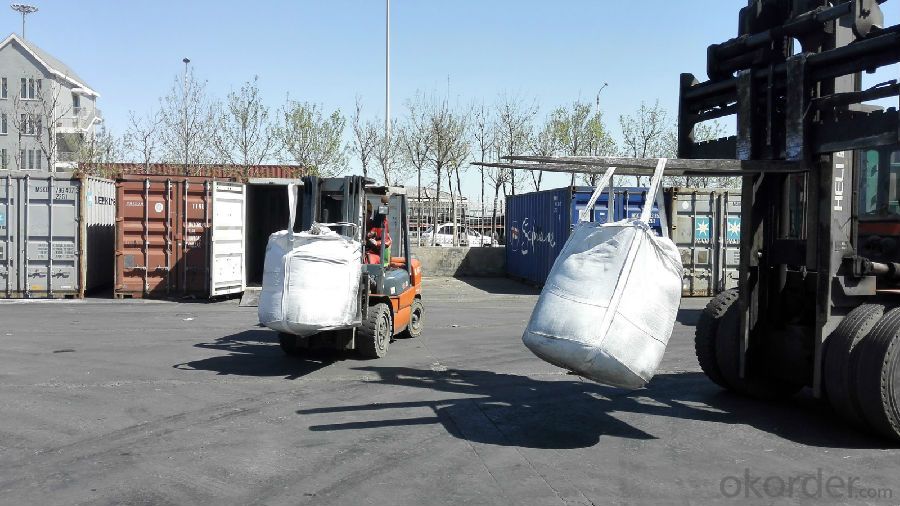
FAQ:
Packing:
(1). Waterproof jumbo bags: 800kgs~1100kgs/ bag according to different grain sizes;
(2). Waterproof PP woven bags / Paper bags: 5kg / 7.5kg / 12.5kg / 20kg / 25kg / 30kg / 50kg small bags;
(3). Small bags into jumbo bags: waterproof PP woven bags / paper bags in 800kg ~1100kg jumbo bags.
Payment terms
20% down payment and 80% against copy of B/L.
Workable LC at sight,
- Q: What are the health effects of carbon monoxide poisoning?
- Carbon monoxide poisoning can have serious health effects on the human body. When inhaled, carbon monoxide (CO) quickly enters the bloodstream and binds to hemoglobin, the oxygen-carrying component of red blood cells. This process reduces the blood's ability to transport oxygen throughout the body, leading to tissue hypoxia (oxygen deprivation). The symptoms of carbon monoxide poisoning can vary depending on the level and duration of exposure, but commonly include headache, dizziness, nausea, confusion, weakness, and shortness of breath. These symptoms can easily be mistaken for other illnesses, which makes carbon monoxide poisoning particularly dangerous, as it can go undetected until it reaches critical levels. In severe cases, carbon monoxide poisoning can lead to loss of consciousness, seizures, coma, and even death. Prolonged or repeated exposure to lower levels of carbon monoxide can cause long-term health issues, including memory problems, difficulty concentrating, mood changes, and cardiovascular complications such as heart disease. Certain populations are more vulnerable to the effects of carbon monoxide poisoning, including young children, pregnant women, the elderly, and individuals with pre-existing heart or lung conditions. Additionally, exposure to high levels of carbon monoxide in enclosed spaces, such as homes with faulty heating systems or car garages, can pose a significant risk. To prevent carbon monoxide poisoning, it is crucial to ensure proper ventilation in living spaces and regularly maintain fuel-burning appliances, such as furnaces, water heaters, and stoves. Installing carbon monoxide detectors in homes is also highly recommended, as they can provide an early warning of dangerous levels of the gas. If suspected of carbon monoxide poisoning, immediate action should be taken to remove oneself from the source of exposure and seek medical attention. Medical professionals may administer oxygen therapy to increase the blood's oxygen levels and facilitate the removal of carbon monoxide from the body. In conclusion, carbon monoxide poisoning can have severe health effects, ranging from mild symptoms to life-threatening conditions. Awareness, prevention, and prompt response are vital in protecting individuals from the dangers of carbon monoxide exposure.
- Q: What is carbon Yi virus?
- Not viruses, anthrax bacillus, anthraci (Bacillus) belongs to aerobic bacillus, can cause sheep, cattle, horses and other animals and human anthrax. Anthrax was as lethal agents of imperialism. Herdsmen, farmers, furs and butchers are susceptible to infection at ordinary times. Skin anthrax is sporadic in our country, so we should not relax our vigilance. Biological characters (1) morphological staining: Bacillus anthracis is thick and ends are flat or sunken. Are like bamboo like, no power, no flagella, gram positive bacteria, the in sufficient oxygen, suitable temperature (25 to 30 DEG C) condition to form spores. No spores can be formed in living or dissected bodies. Spore oval, located in the middle of the bacteria, its width is less than the width of bacteria. Capsules can be formed in humans and animals, and in capsules incubated with CO2 and serum, they can also form capsules. The formation of capsules is a toxic feature. Bacillus anthracis is affected by a low concentration of penicillin, and bacteria can be enlarged to form a bead, called "beaded reaction"". This is also a unique reaction of Bacillus anthracis. (two) the culture characteristic of this bacterium is obligate aerobic, and it is easy to breed in common medium. The optimum temperature was 37 DEG C, and the optimum pH was 7.2 ~ 7.4. After 24 hours on agar plate, the rough colony of 2 ~ 4mm Diameter was developed. The colonies were ground glass like, irregular edge, like curly hair, there are one or several small tail processes, this is the expansion of reproduction in 5 caused by bacteria to 10% sheep blood agar plate, no obvious hemolysis ring around the colony, but a long culture can have mild hemolysis.
- Q: How does carbon affect water quality?
- Carbon can have both positive and negative effects on water quality. On one hand, carbon is a natural part of the carbon cycle and plays a crucial role in maintaining the balance of aquatic ecosystems. Carbon can act as a nutrient for aquatic plants, promoting their growth and providing food and habitat for other organisms within the food chain. However, excessive amounts of carbon in water can lead to negative impacts on water quality. One way this occurs is through an increase in dissolved organic carbon (DOC). Elevated levels of DOC can result from the decomposition of organic matter, such as dead plants and animals, and the leaching of organic compounds from soil. These organic compounds can have negative effects on water quality by reducing the amount of dissolved oxygen available for aquatic organisms, which can lead to the suffocation of fish and other aquatic life. Additionally, high levels of carbon can contribute to the process of eutrophication. Eutrophication occurs when there is an excess of nutrients, including carbon, in water bodies, leading to an overgrowth of algae and other aquatic plants. This excessive growth can result in the depletion of oxygen levels in the water as the plants decompose, causing harm to fish and other organisms that rely on oxygen for survival. Furthermore, carbon can also interact with other pollutants present in water, such as heavy metals and pesticides, which can become more toxic and bioavailable when combined with carbon. This can have detrimental effects on aquatic organisms and disrupt the overall balance of the ecosystem. Overall, while carbon is essential for the functioning of aquatic ecosystems, excessive amounts can negatively impact water quality by reducing oxygen levels, promoting eutrophication, and enhancing the toxicity of other pollutants. Therefore, it is crucial to monitor and manage carbon levels in water bodies to ensure the maintenance of a healthy and balanced aquatic ecosystem.
- Q: What are the basic structures of iron carbon alloys?
- The symbol is A. The stable austenite has a temperature of 727 DEG C, when the solubility of carbon is 0.77%, the strength, hardness and plasticity of austenite are very good, which is the organization required for high temperature forging or rolling of most steels.Cementite: a metallic compound of iron and carbon with a carbon content of 6.69%. The formula Fe3C is expressed in symbolic Cm. High hardness, poor plasticity, hard and brittle, the number of cementite increases, strength and hardness increase, while plasticity decreases.
- Q: 15CrMo seamless steel tube and carbon plate welding fracture what is the reason?
- Is heat-resistant steel, welding performance is poor, using ER80S-B2L welding wire, T1G welding bottoming, E309Mo-16 welding rod, electrode filling arc welding cover surface, welding without heat treatment
- Q: How does carbon affect the formation of earthquakes?
- The formation of earthquakes is not directly influenced by carbon. The primary cause of earthquakes is the movement of tectonic plates, which are large sections of the Earth's crust that float on a semi-fluid layer underneath. These plates can collide, slide past each other, or move apart, resulting in stress building up along the boundaries between the plates. When this stress becomes too great, it is released as an earthquake. Nevertheless, carbon can indirectly impact the occurrence of earthquakes through its role in the Earth's carbon cycle and its contribution to climate change. Carbon dioxide (CO2) is a greenhouse gas, which is released into the atmosphere through various human activities, including the burning of fossil fuels. This excess CO2 in the atmosphere leads to global warming and climate change. Climate change can have several effects on the Earth's crust, some of which may indirectly influence seismic activity. For instance, global warming can cause the melting of glaciers and polar ice caps, resulting in changes in the distribution of mass on the Earth's surface. This redistribution of mass can cause adjustments in the Earth's crust, leading to increased stress along fault lines and potentially triggering earthquakes. Furthermore, climate change can affect groundwater levels and pore pressure within rocks through changes in precipitation patterns and the hydrological cycle. These alterations in water content can modify the strength and stability of fault lines, making them potentially more susceptible to slipping and causing earthquakes. It is crucial to note that the direct impact of carbon on earthquake formation is minimal compared to primary factors like plate tectonics. However, scientists are conducting ongoing research and investigations to understand the relationship between carbon emissions, climate change, and seismic activity.
- Q: How does carbon impact the prevalence of cyclones?
- Carbon emissions contribute to the prevalence of cyclones by intensifying the greenhouse effect, leading to warmer sea surface temperatures. Warmer oceans provide more energy for cyclones to form and strengthen, increasing their frequency and intensity. Additionally, higher levels of carbon dioxide in the atmosphere can alter atmospheric circulation patterns, creating more conducive conditions for cyclone development.
- Q: How does carbon affect the fertility of soil?
- Carbon is essential for maintaining and enhancing soil fertility. It provides a food source for soil microorganisms, promotes nutrient availability, and improves soil structure, water holding capacity, and overall soil health. Additionally, carbon helps increase the capacity of soil to retain and release nutrients, creating a favorable environment for plant growth and enhancing soil fertility.
- Q: What are the effects of carbon emissions on freshwater systems?
- Freshwater systems are significantly affected by carbon emissions, with one major consequence being the acidification of water bodies. When carbon dioxide dissolves in water, it creates carbonic acid, resulting in a decrease in pH levels. This acidification negatively impacts freshwater organisms like fish, amphibians, and invertebrates, as it disrupts their physiological processes and can even lead to their death. Furthermore, carbon emissions contribute to global warming, which in turn has an impact on freshwater systems. Rising temperatures can lead to increased evaporation, causing water scarcity in specific regions. This scarcity has severe implications for both human populations and ecosystems that rely on freshwater resources. Additionally, the warming of freshwater systems can disturb the balance of the ecosystem by promoting the growth of harmful algae blooms. These blooms thrive on excess nutrients, such as nitrogen and phosphorus, which are often present in runoff from agricultural and urban areas. The combination of higher temperatures and nutrient enrichment can result in the proliferation of harmful algae, which produce toxins that are harmful to aquatic life and human health. Moreover, carbon emissions indirectly affect freshwater systems through their contribution to climate change. As global temperatures rise, glaciers and polar ice caps melt, leading to an influx of freshwater into the system. This sudden increase in freshwater disrupts the delicate balance between saltwater and freshwater ecosystems, affecting the distribution and migration patterns of various species. It also alters salinity levels, impacting the survival and reproduction of marine organisms. In conclusion, carbon emissions have various negative effects on freshwater systems, including acidification, water scarcity, the proliferation of harmful algae blooms, and disruptions to the delicate balance between saltwater and freshwater ecosystems. It is crucial to reduce carbon emissions and mitigate the impacts of climate change to protect the health and sustainability of freshwater systems.
- Q: How to test aldehyde group and carbon carbon double bond in acrolein
- then the bromine test double bonds, because the aldehyde will affect the bond detection, and will not affect the detection of double bond of carboxyl.
Send your message to us
FC88% Recarburizer with Ash 4% for steel making
- Loading Port:
- Tianjin
- Payment Terms:
- TT OR LC
- Min Order Qty:
- 20.1
- Supply Capability:
- 1001 m.t./month
OKorder Service Pledge
OKorder Financial Service
Similar products
Hot products
Hot Searches
